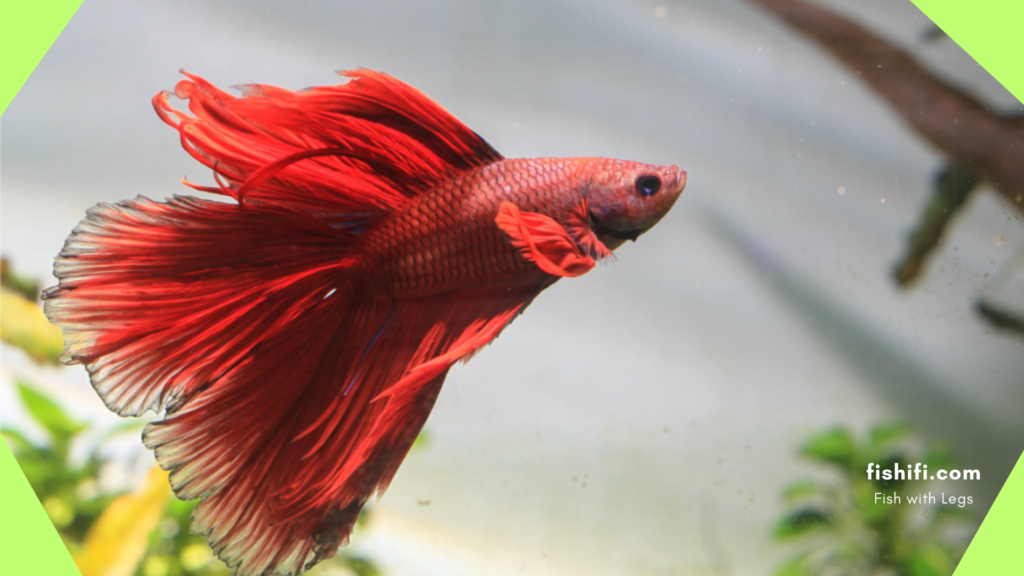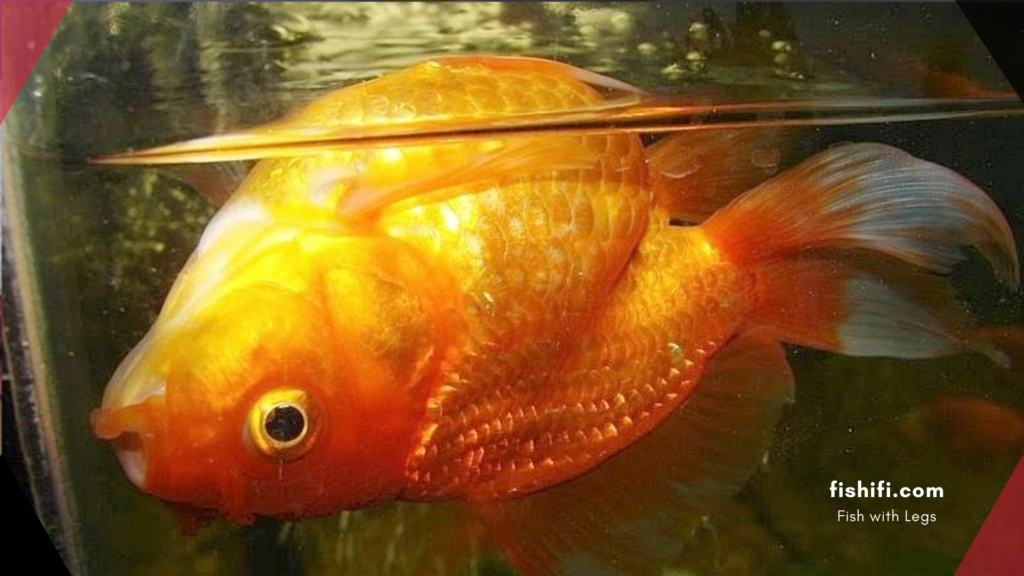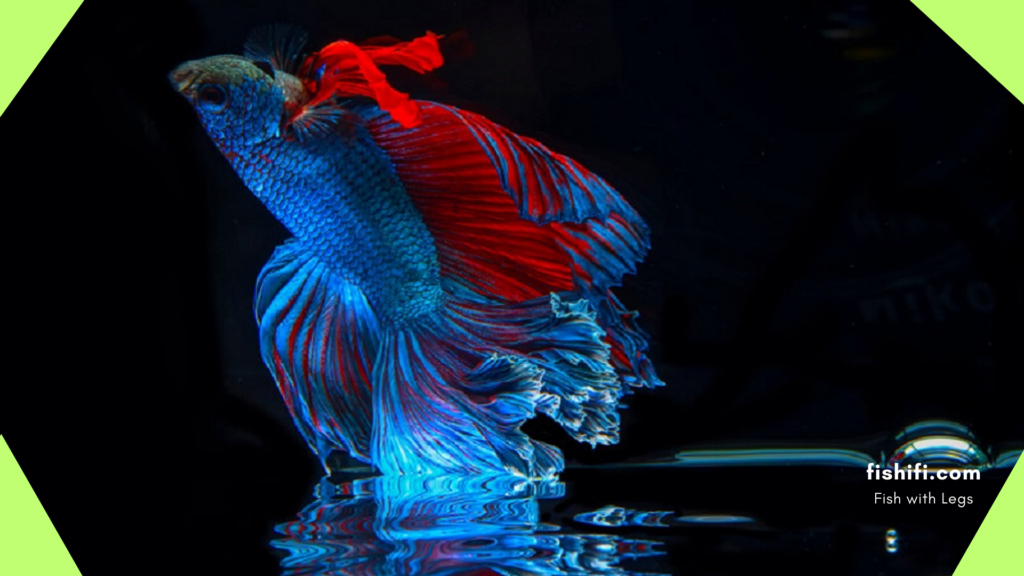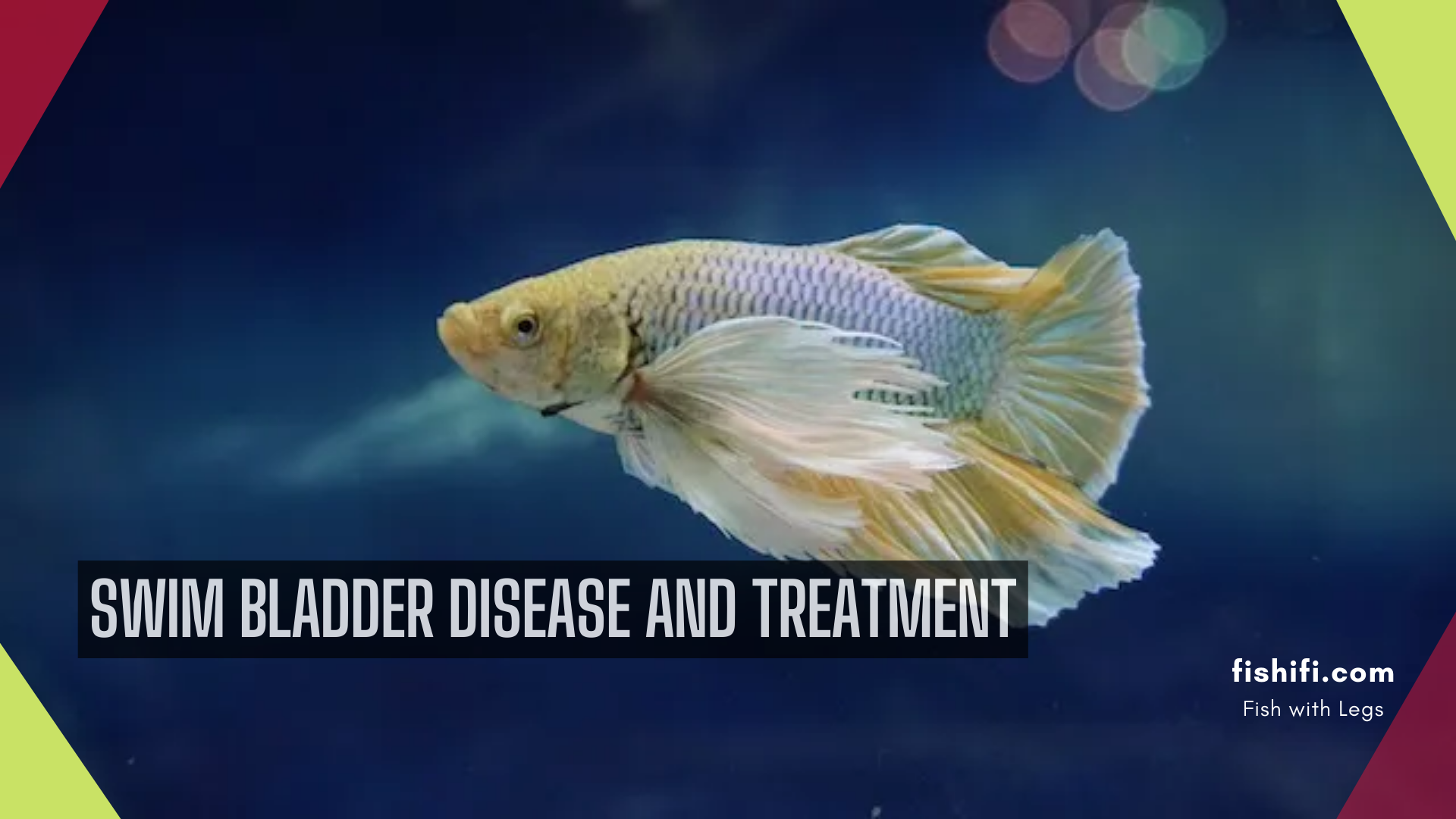Swim bladder disease is a common ailment that affects fish, impacting their ability to control buoyancy. Fish have a special organ called a swim bladder that helps them control their buoyancy underwater. This article aims to simplify the complexities of swim bladder disease, exploring its causes, symptoms, and ways to care for our aquatic friends facing this challenge.
Table of Contents
Understanding the Swim Bladder
The swim bladder is like a built-in buoyancy device for fish. There are two types: physostomes, where fish gulp air at the surface, and physoclists, which use a specialized gland to fill the bladder with gases from the blood. This organ, located near the spine, plays a crucial role in a fish’s posture, swimming ability, and even in producing sounds.

Fish with swim bladders that are physostomes fill their swim bladder by swallowing air at the water’s surface. The air then rapidly goes through a cylinder-like association with the swim bladder.
In physoclist fish, a specific gas organ permits gases to break down in the blood to fill the swim bladder, keeping it brimming with gas.
An extreme external film encircles the swim bladder and lies simply under the spinal rope in the coelomic body cavity.
The Basics of Swim Bladder Disease
Among the various concerns when this condition afflicts a fish, a critical question often lingers in the minds of aquarium enthusiasts and pet fish owners, “How long can a fish live with swim bladder disease?

Swim bladder disease, also known as buoyancy disorder, occurs when the swim bladder—a gas-filled organ responsible for buoyancy control—malfunctions. This disruption can lead to symptoms such as erratic swimming patterns, difficulty maintaining balance, and a fish’s inability to stay at a certain depth.
Related: The Fascinating World of Betta Fish
Why Do Fish Get Swim Bladder Problems?
There are different reasons why fish can have swim bladder issues. One big reason that people might not think about is the quality of the water.
If the water is not clean or good for the fish, it can make them stressed. Stress messes up how their bodies normally work (like keeping everything balanced), and this can lead to problems with their buoyancy. If you notice your fish having trouble staying in the right place in the water, it’s important to check the water quality and fix it if needed.
What Do Swim Bladder Problems Look Like?
You can tell if a fish has swim bladder issues by how they act. Most fish should stay in the middle of the water easily. But fish with problems might:
- Float too much: They spend too much time at the top and can’t move down. They might float in strange ways, like being upside down.
- Sink too much: They stay at the bottom and can’t come up. These fish might have a strange posture too. Understanding these signs helps you take care of your fish and keep them healthy.
Swim Bladder Problems in Various Fish
1. Goldfish:
Goldfish are particularly prone to swim bladder disorders due to their unique body shape and, in some fancy varieties, a highly curved spine. Being physostomous, they have an open connection between their esophagus and swim bladder, making buoyancy disorders more complex.
Common Causes:
- Diet: Excess air entering the gastrointestinal tract during feeding is a common culprit.
- Genetics: Some varieties are predisposed to swim bladder issues due to their breeding history.
Potential Solutions:
- Diet Modification: Switching to a sinking or neutrally buoyant diet may help in mild cases.
- Veterinary Guidance: Always consult a vet before attempting any buoyancy compensation devices, as improper use can harm the fish.
2. Tropical Fish:
Various tropical fish species may experience swim bladder issues, often attributed to environmental factors, genetics, or improper care.
Common Causes:
- Overfeeding: Consuming excess food can lead to swim bladder compression.
- Water Quality: Poor water conditions contribute to stress, impacting swim bladder function.
Potential Solutions:
- Balanced Diet: Feeding appropriate portions to prevent overeating.
- Water Quality Maintenance: Regularly monitor and maintain clean water conditions.

Related: Frogfish: Walking Underwater Wonders
3. Betta Fish:
Betta fish, known for their vibrant colors and elaborate fins, can also encounter swim bladder challenges.
Common Causes:
- Overfeeding: Betta fish may overeat, leading to swim bladder compression.
- Improper Tank Conditions: Inadequate space or poor water quality can contribute.
Potential Solutions:
- Controlled Feeding: Offer small, manageable portions.
- Proper Tank Setup: Ensure an adequately sized and well-maintained tank.
4. Gourami
Gouramis, popular for their unique appearance, can face swim bladder issues associated with specific conditions.
Common Causes:
- Dietary Imbalance: Inadequate nutrition may impact swim bladder function.
- Water Temperature Fluctuations: Sudden temperature changes can stress the fish.
Potential Solutions:
- Varied Diet: Provide a balanced and diverse diet.
- Stable Environment: Maintain consistent water temperatures.

Related: 5 Popular Extinct Fish With Legs
5. Cichlids:
Cichlids, known for their territorial behavior, may exhibit swim bladder problems related to stress and dietary factors.
Common Causes:
- Aggressive Behavior: Territorial disputes among cichlids can induce stress.
- Incorrect Diet: Inappropriate nutrition may lead to buoyancy issues.
Potential Solutions:
- Adequate Space: Ensure a well-structured tank layout to reduce aggression.
- Balanced Nutrition: Offer a diet suitable for cichlid species.
Lifespan Concerns:
Understanding the impact of swim bladder disease on the lifespan of a fish involves considering various factors that influence their ability to cope with this condition. The duration a fish can live with swim bladder disease is not fixed and depends on several crucial elements:
- Fish Species:
- Different fish species exhibit varying degrees of resilience to swim bladder disease. Some species may inherently cope better with the challenges posed by impaired buoyancy, contributing to an extended lifespan despite the ailment.
- Underlying Cause of the Ailment:
- Identifying the specific reason behind the swim bladder disease is essential. Whether it stems from overfeeding, improper diet, bacterial infections, or other factors, the underlying cause plays a significant role in determining the fish’s ability to adapt and survive.
- Promptness of Intervention:
- Timely intervention and appropriate care significantly impact a fish’s prognosis. If fish owners promptly address the symptoms and provide suitable treatment, it can enhance the chances of the fish adapting to the condition and living a longer, healthier life.
- Adaptive Behavior:
- Some fish display remarkable adaptability, adjusting their behavior and swimming patterns to compensate for the challenges posed by impaired buoyancy. Fish that successfully adapt can manage to survive for an extended period, showcasing the resilience of certain individuals.
- The severity of the Disease:
- The severity of the swim bladder disease also plays a crucial role. Fish experiencing mild or intermittent symptoms may have a better prognosis compared to those with severe and persistent issues. Managing the severity through appropriate care measures can positively influence the fish’s longevity.
- Overall Health of the Fish:
- The general health and well-being of the fish contribute significantly to its ability to withstand the effects of swim bladder disease. Fish that receive proper nutrition, live in a clean and suitable environment, and experience minimal stress are better equipped to cope with and potentially overcome the challenges posed by impaired buoyancy.

Related: A List of 37 Fish with Legs Name
Care and Treatment
Providing proper care for a fish affected by swim bladder disease involves a multifaceted approach. Adjusting the fish’s diet, maintaining water quality, and creating a stress-free environment are essential steps. Additionally, quarantine and medicated treatments may be necessary in cases where infections play a role in the disease.
Prevention is Key
Preventing swim bladder disease is undoubtedly preferable to treating it. Fish owners should be vigilant about maintaining a balanced diet, ensuring proper feeding habits, and regularly monitoring water parameters. Creating an environment that minimizes stress and promotes overall fish well-being is integral to preventing swim bladder disease from developing.
Fish can live lengthy, blissful lives with swim bladder problems — it will simply require a couple of changes to your tank and routine.

